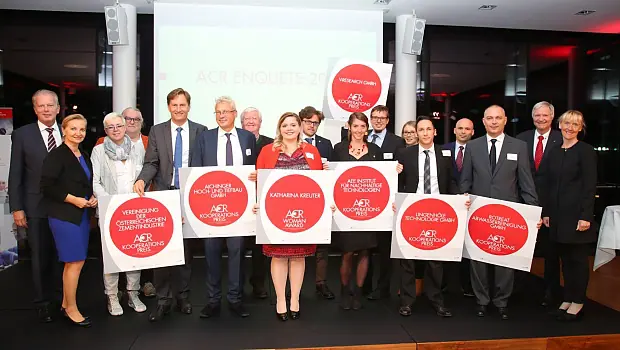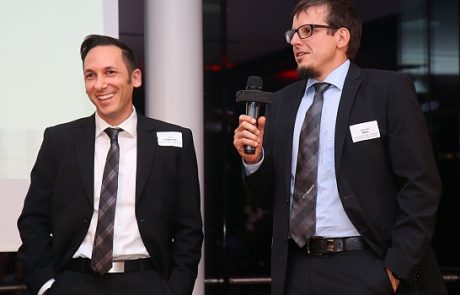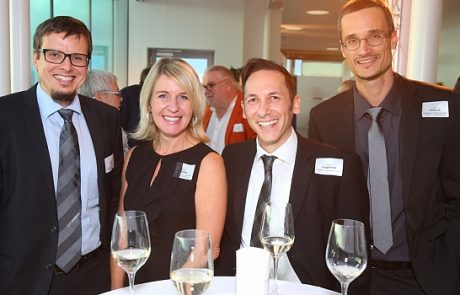ACR Cooperation Award 2016: Nitriding process makes tools more durable
In order to ensure that steel mechanical components, such as tools or gears, last longer they are treated on the surface, for example by nitriding. This improves the quality of the surface and thus the lifespan of these components. The Vorarlberg research institute V-Research, together with Lingenhöle Technologie GmbH, has developed a nitriding process that increases the wear resistance and service life of press brake tools by 80 percent. In addition, a nitriding process catalogue was developed, which enables the Lingenhöle company to offer customer-specific nitriding layers. For this, Lingenhöle and V-Research have now been awarded the ACR cooperation prize.
Vienna, October 4th, 2016. The thermochemical nitriding process has been the technical standard for over 100 years. Nitriding creates a hard surface layer on the base material. This surface treatment increases the wear resistance of mechanical components, such as forming tools, roller bearings or gears, and thus their lifespan. Until now, the selection of the nitriding process and the individual nitriding parameters were based on standard data and at the heat treatment provider’s own discretion. Determining these parameters is particularly difficult for small series or large workpieces with a quantity of 1, since data is rarely available on this and no test runs can be carried out.
For mechanical engineering, the service life of tools and machine components is, however, an important cost factor and there is therefore great interest in getting the best out of them. In a joint research project, V-Research and Lingenhöle Technologie GmbH examined the interactions between nitriding processes, nitriding process parameters, material selection and tribology using the example of an edge bending tool. “By adjusting the nitriding process parameters, we were able to increase the wear resistance and service life of the press brake tool by 80 percent,” says Klaus Lingenhöle, Managing Director of Lingenhöle Technologie GmbH, proud of the result, in whose company all the nitriding process tests were carried out. “V-Research carried out the experimental tests in this project,” adds Alexander Diem, Head of Tribo Design at V-Research. “You can imagine it like detective work – based on the signs of wear on the components, you try to identify which mechanism is precisely responsible for the wear and then you know which parameters you have to change – so you slowly feel your way towards the optimum”,
continues Diem.
The exciting thing about this project was that a larger consortium was involved along the entire production chain. Salvagnini Maschinenbau GmbH wanted to make their press brake tools even more durable. This is how the company Lingenhöle, the company Salvagnini Maschinenbau and the company Glück, the manufacturer of the components, started a research project together with AC²T research and the ACR institute V-Research. The project “Nitriding layers and their tribological properties” is running in the COMET K2 XTribology program. Everyone is happy with the result. Salvagnini was able to increase the service life of the edge bending tool in question by 80 percent and Lingenhöle was able to generate a great deal of additional expertise. “Previously, we could only rely on customer feedback and our know-how when selecting the nitriding process and the process parameters,” explains Klaus Lingenhöle, “now we have a well-founded nitriding catalogue at hand that allows us to advise our customers much more specifically and effectively and achieve even better results, even with small quantities,” says Lingenhöle.




